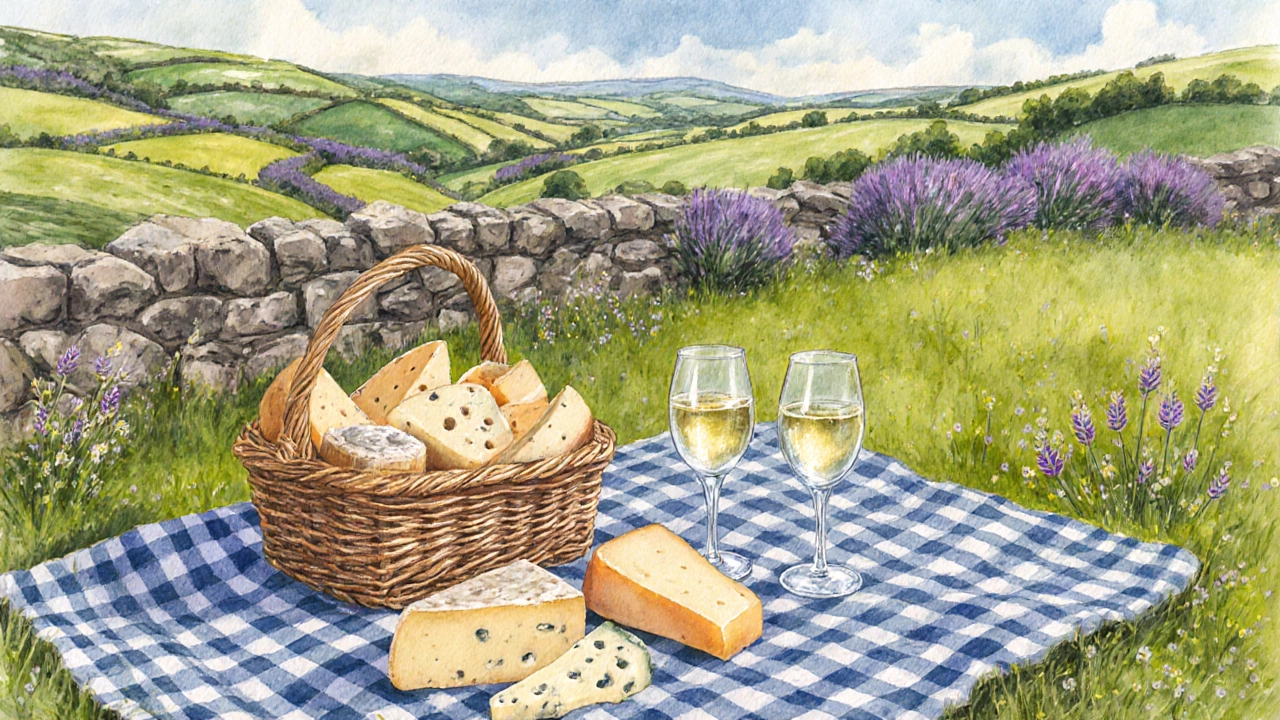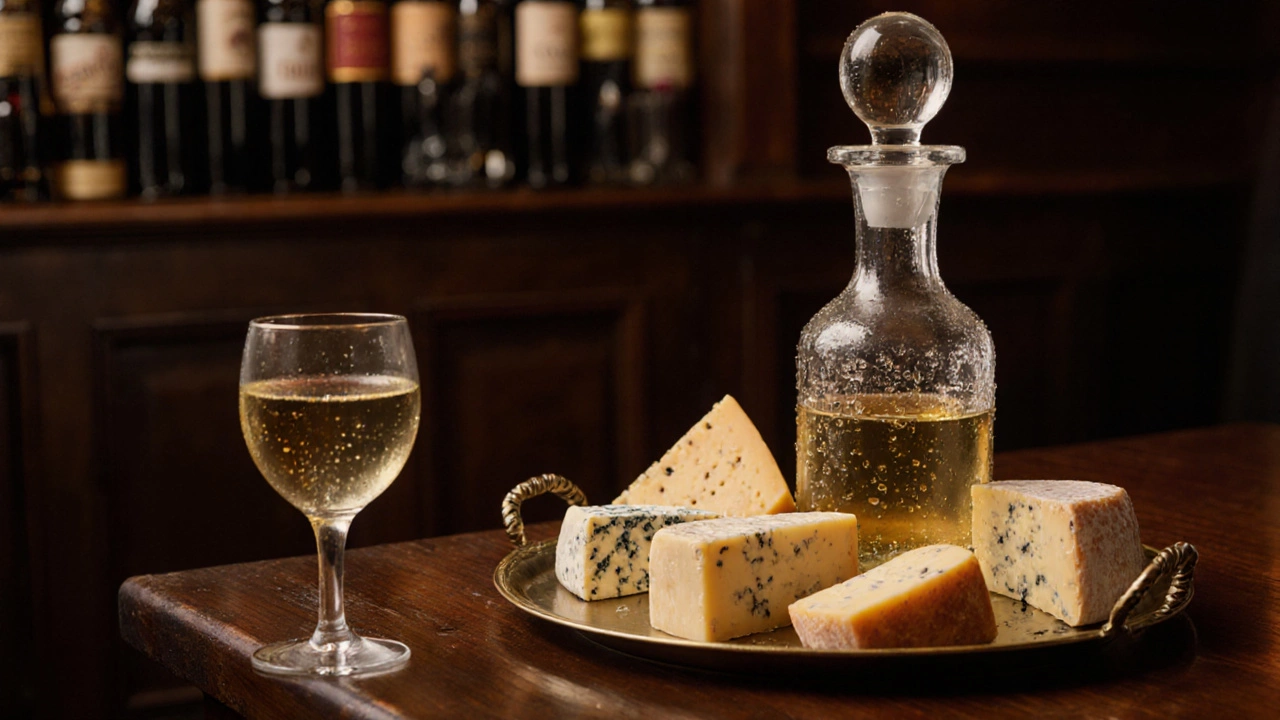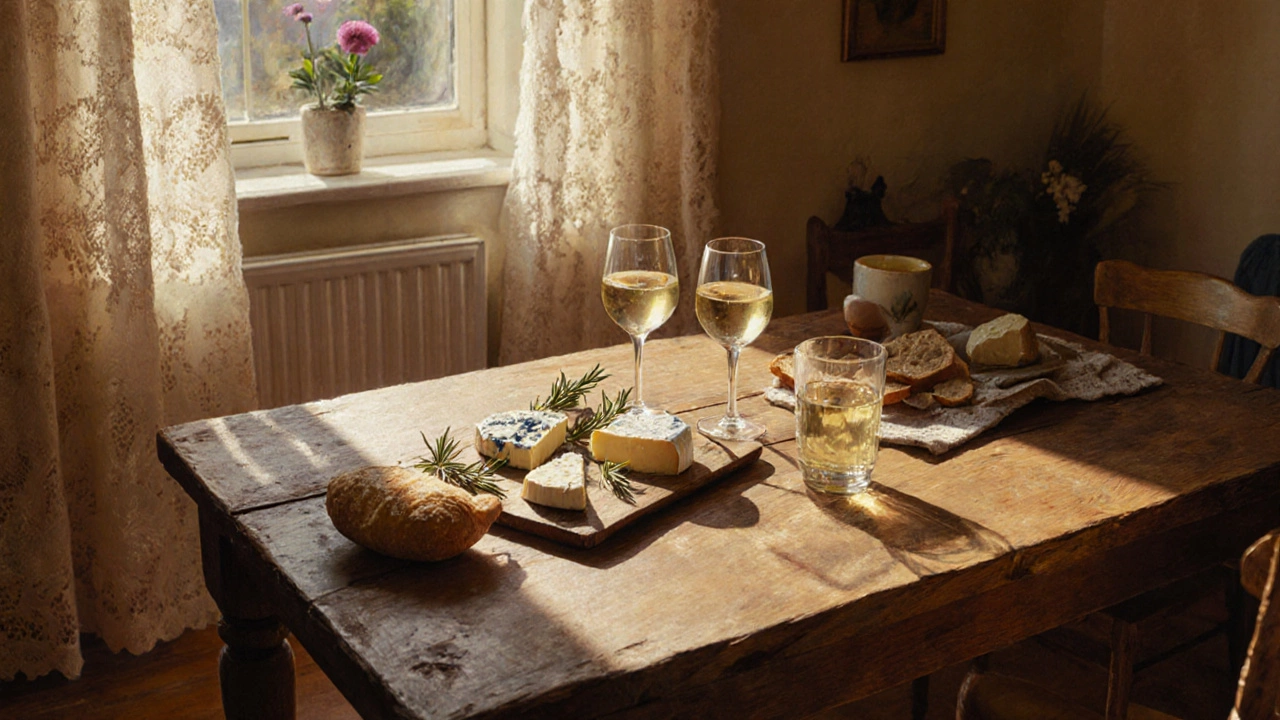White Wine & Cheese Pairing Matcher
Select a white wine and a cheese to discover their pairing compatibility:
Recommended Pairing
Cheese is a dairy product that varies in texture, flavor, and moisture, making it a versatile partner for drinks. When you ask, “Which cheese goes best with white wine?”, the answer hinges on how the cheese’s attributes mesh with the wine’s acidity, body, and aromatics.
Why Pairing Matters
Good pairings amplify the best of both worlds. A crisp white wine can cut through a creamy cheese, while a buttery cheese can soften a high‑acid wine. The science is simple: balance sweetness, acidity, and fat. The art is personal - your palate, the setting, and even the food on the table influence the perfect match.
Core Principles of White‑Wine & Cheese Pairing
- Match intensity: Light wines go with delicate cheeses; full‑bodied wines need robust cheeses.
- Contrast texture: Crunchy cheeses soften the perception of a wine’s sharpness.
- Complement flavors: Fruit‑forward wines pair well with cheeses that have nutty or fruity notes.
These rules guide the selections you’ll see below.
Key White Wines and Their Ideal Cheese Counterparts
Below are the three most common white wines you’ll encounter, each paired with a cheese that highlights its character.
White Wine as a category includes many styles, but three stand out for pairing:- Chardonnay: Often oaked, with buttery notes and medium‑high acidity.
- Sauvignon Blanc: Zesty, herbaceous, high‑acid profile.
- Riesling: Ranges from dry to off‑sweet, with pronounced fruit and mineral tones.
Cheese Profiles That Shine with White Wine
Here’s a quick look at six cheeses that consistently complement the three wines above. Each profile includes texture, flavor, and why it works.
- Goat Cheese (Chèvre): Soft, tangy, and slightly earthy. Its acidity mirrors that of Sauvignon Blanc, creating a bright, refreshing combo.
- Brie: Creamy, buttery, with a mild mushroom aroma. The fat content mellows Chardonnay’s oak, while the subtle earth notes echo the wine’s vanilla hints.
- Camembert: Similar to Brie but with a stronger, more pronounced rind. It stands up to the fuller body of an oaked Chardonnay.
- Manchego: Firm, nutty, and slightly salty. Its richness balances the crisp acidity of a dry Riesling.
- Feta: Crumbly, salty, with a bright dairy tang. Pairs surprisingly well with a herbaceous Sauvignon Blanc, cutting through the wine’s green notes.
- Gruyère: Semi‑hard, sweet‑nutty, with a slight caramel edge. Holds its own against a medium‑dry Riesling, especially when the wine shows stone fruit flavors.

Side‑by‑Side Comparison
| Cheese | Key Flavor | Texture | Best White Wine Match | Why It Works |
|---|---|---|---|---|
| Goat Cheese | Tangy, citrusy | Soft/creamy | Sauvignon Blanc | Acidity mirrors; herbal notes complement |
| Brie | Buttery, mushroom | Creamy | Chardonnay | Fat softens oak; subtle earth aligns with vanilla |
| Camembert | Earthy, nutty | Creamy with rind | Chardonnay (oaked) | Richer texture balances fuller body |
| Manchego | Nutty, buttery | Semi‑hard | Riesling (dry) | Nutty notes echo stone fruit, acidity cuts fat |
| Feta | Salty, briny | Crumbly | Sauvignon Blanc | Salty contrast lifts green herbs |
| Gruyère | Sweet‑nutty, caramel | Semi‑hard | Riesling (off‑dry) | Sweetness mirrors fruit, balances caramel notes |
Practical Tips for a Seamless Tasting Experience
- Serve cheese at room temperature (about 20°C). Cold cheese mutes flavors.
- Let the wine breathe for 15‑20 minutes if it’s a full‑bodied Chardonnay; lighter wines need less time.
- Provide a neutral palate cleanser - plain crackers or a slice of apple work well.
- Start with the lightest cheese (goat cheese) and progress to richer ones (Gruyère).
- Take note of how the wine’s acidity changes after each bite; adjust by adding a pinch of sea salt if needed.
Following these steps ensures the cheese and white wine pairing feels intentional rather than accidental.
Beyond the Basics: Exploring Regional Pairings
Every wine‑producing region has a traditional cheese that grew up alongside it. A few notable combos:
- Loire Valley Sauvignon Blanc with Crottin de Chavignol (goat cheese) - a classic French match.
- German Riesling paired with Allgäuer Bergkäse - a mountain cheese that tolerates high acidity.
- California Chardonnay with Monterey Jack - the buttery jack echoes the oak in the wine.
When you travel, seek out these local pairings; they often reveal the terroir’s personality.
Common Mistakes and How to Avoid Them
- Over‑matching sweetness: Pairing a sweet Riesling with a very sweet cheese (like a honey‑drizzled goat cheese) can make both taste cloying.
- Ignoring texture: A very crumbly cheese with a high‑acid wine can feel harsh - choose a softer cheese or lower the wine’s acidity.
- Serving too cold: Both cheese and wine should be slightly above fridge temperature for best aroma release.
Putting It All Together: A Sample Tasting Menu
- Starter: Fresh goat cheese on toasted rye, paired with a chilled Sauvignon Blanc.
- Main: Creamy Brie with a buttery oaked Chardonnay, accompanied by toasted almonds.
- Finish: A slice of aged Manchego served alongside a dry Riesling, finished with a few dried apricots.
This progression respects intensity, texture, and flavor balance, delivering a memorable tasting journey.

Frequently Asked Questions
Can I pair any white wine with any cheese?
Not really. While many white wines are versatile, the best matches consider acidity, body, and flavor. A light, high‑acid wine like Sauvignon Blanc works best with fresh, tangy cheeses, whereas a fuller, buttery Chardonnay pairs nicely with rich, creamy cheeses.
What if I prefer a sweeter white wine?
Slightly sweet wines such as off‑dry Riesling or Gewürztraminer complement cheeses with modest salt or spice. Pair them with aged Gouda, blue‑veined cheeses, or a honey‑drizzled goat cheese to balance the sweetness.
Is temperature important for cheese and wine pairing?
Yes. Serve white wine slightly chilled (8‑12°C) and cheese at room temperature. Cold cheese suppresses flavor, while overly warm wine can feel flabby.
How do I create a simple cheese board for a white‑wine party?
Choose three cheeses of varying intensity - for example, goat cheese, Brie, and Manchego. Add neutral crackers, fresh fruit (grapes or figs), and a small handful of nuts. Arrange the board so the lighter cheese is placed first, moving to richer options.
Can I use the same cheese for multiple white wines?
A versatile cheese like mild Gouda or a semi‑soft cheese such as Havarti can work with a range of whites, but the nuance will shift. Experiment by tasting the cheese with each wine to notice how the flavor profile changes.
What are some non‑dairy alternatives that pair well with white wine?
Plant‑based cheeses made from cashew or almond milk, especially those with a subtle tang, can mimic goat cheese and pair nicely with Sauvignon Blanc. Look for versions that list “cultured” or “aged” on the label for more depth.


